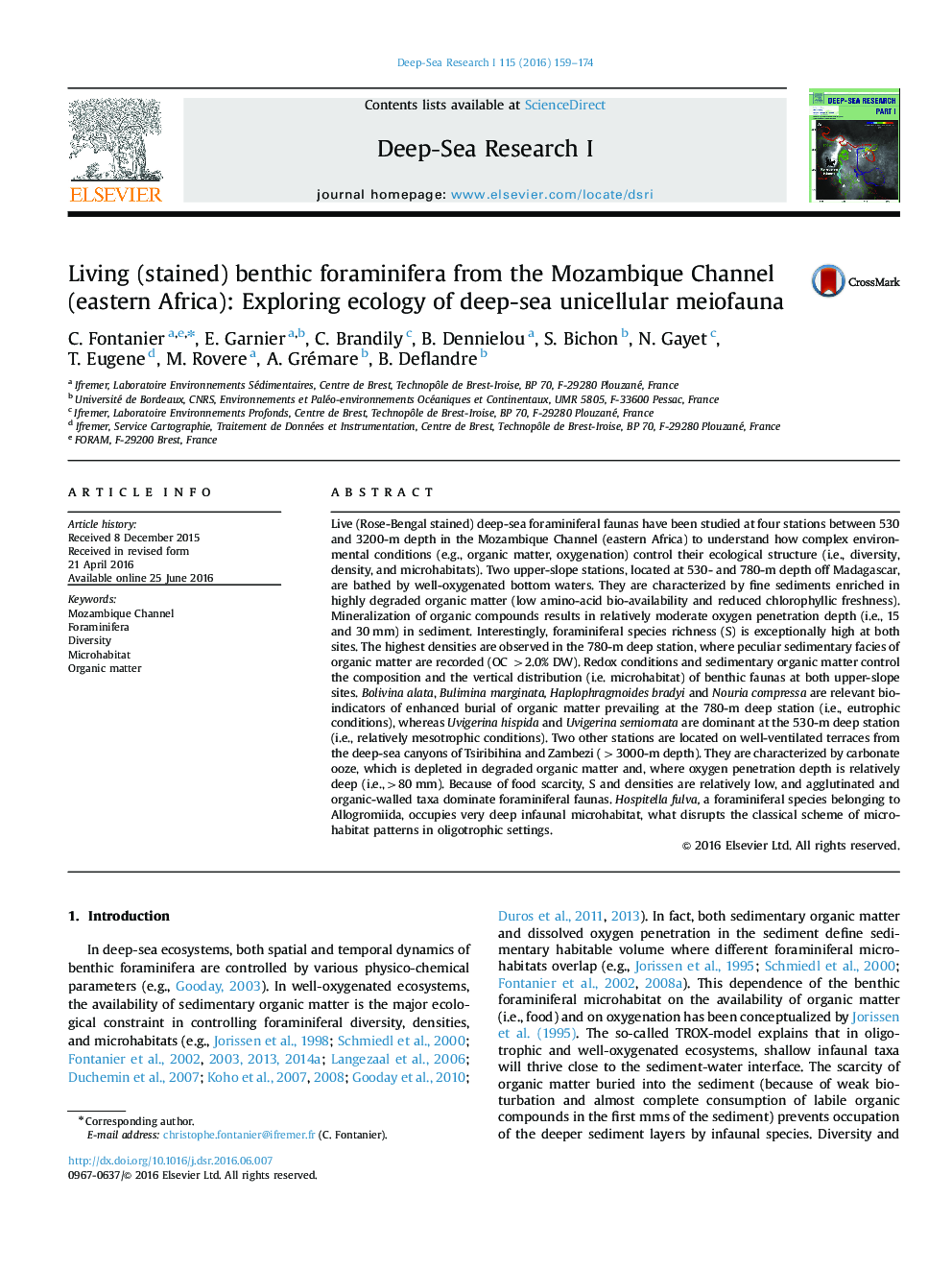| کد مقاله | کد نشریه | سال انتشار | مقاله انگلیسی | نسخه تمام متن |
|---|---|---|---|---|
| 4534418 | 1626315 | 2016 | 16 صفحه PDF | دانلود رایگان |
• Living foraminifera from the Mozambique Channel are studied for the first time.
• A multidisciplinary approach allows gathering reliable environmental information.
• Sedimentary organic matter plays a major role on diversity, density and microhabitat.
Live (Rose-Bengal stained) deep-sea foraminiferal faunas have been studied at four stations between 530 and 3200-m depth in the Mozambique Channel (eastern Africa) to understand how complex environmental conditions (e.g., organic matter, oxygenation) control their ecological structure (i.e., diversity, density, and microhabitats). Two upper-slope stations, located at 530- and 780-m depth off Madagascar, are bathed by well-oxygenated bottom waters. They are characterized by fine sediments enriched in highly degraded organic matter (low amino-acid bio-availability and reduced chlorophyllic freshness). Mineralization of organic compounds results in relatively moderate oxygen penetration depth (i.e., 15 and 30 mm) in sediment. Interestingly, foraminiferal species richness (S) is exceptionally high at both sites. The highest densities are observed in the 780-m deep station, where peculiar sedimentary facies of organic matter are recorded (OC >2.0% DW). Redox conditions and sedimentary organic matter control the composition and the vertical distribution (i.e. microhabitat) of benthic faunas at both upper-slope sites. Bolivina alata, Bulimina marginata, Haplophragmoides bradyi and Nouria compressa are relevant bio-indicators of enhanced burial of organic matter prevailing at the 780-m deep station (i.e., eutrophic conditions), whereas Uvigerina hispida and Uvigerina semiornata are dominant at the 530-m deep station (i.e., relatively mesotrophic conditions). Two other stations are located on well-ventilated terraces from the deep-sea canyons of Tsiribihina and Zambezi (>3000-m depth). They are characterized by carbonate ooze, which is depleted in degraded organic matter and, where oxygen penetration depth is relatively deep (i.e.,>80 mm). Because of food scarcity, S and densities are relatively low, and agglutinated and organic-walled taxa dominate foraminiferal faunas. Hospitella fulva, a foraminiferal species belonging to Allogromiida, occupies very deep infaunal microhabitat, what disrupts the classical scheme of microhabitat patterns in oligotrophic settings.
Journal: Deep Sea Research Part I: Oceanographic Research Papers - Volume 115, September 2016, Pages 159–174
